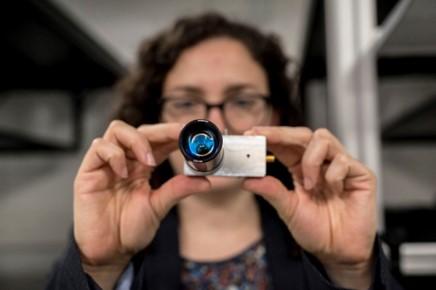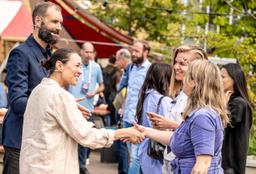.jpg&w=3840&q=75)
Clara Osorio Tamayo, new lead of QDNL's Quantum Sensing Applications programme (CAT 3)
.jpg&w=3840&q=75)
Clara Tamayo is the new Catalyst Programme 3 ‘Quantum Sensing Applications’ (CAT-3) Coordinator at QDNL. A Physicist with twenty years of experience in Quantum, Clara believes that Quantum sensing offers endless possibilities. Once a sensing technology has been developed, the applications that follow could have great potential.
Clara recently took over for Phillipe Bouyer who was appointed to QDNL’s board. In her new role, Clara will help define the next phase of the program, and to help better connect it with the rest of the Quantum ecosystem in the NL and abroad. Last month, we spoke with her about her new role and her vision for Quantum sensing in the Netherlands. Here is what she said.
What will you be doing in this new role?
It’s a complex program, and I will be coordinating the relationship with the Quantum Delta NL Foundation as well as the ecosystem. The most immediate task will be to prepare for the 3rd phase of the Quantum Delta NL program, where we will define the projects that can have the most impact and the course of the program for the next four years. I’m most looking forward to coordinating the effort to make the program more open and to be better connected with the rest of the ecosystem. Our focus is to keep the core “Quantum Sensing Testbed Facilities” within the Netherlands. In these facilities, quantum sensing instruments are developed, tested, and applied to real-world challenges. Each facility focuses on different types of sensors, (cold atoms, mechanical, diamond-based) and they aim to serve the complete value chain starting with universities to potential end users.
It’s also a priority of the program to strengthen the QDNL community by connecting and providing opportunities to Quantum sensing researchers in the Netherlands who are not part of the CAT-3, and also companies, from different sectors, from semiconductors to space. The goal is to create a sustainable system of research and development on quantum sensing that can continue long after the Quantum NL Delta program ends
Could you tell us about your background?
I'm Colombian, and I was trained as a physicist there. From very early on, I was interested in science and especially in physics. I also had a great affinity for math. I did my undergrad in physics and specialized in Quantum optics. Essentially, everything that I have worked on in the last 20 years is related to Quantum technologies.
I moved to Europe 20 years ago to continue with my academic career, and worked in Spain and Switzerland. I finally moved to the Netherlands a decade ago. For the past seven years, I’ve been working at TNO where I had the opportunity to set up the Quantum sensing program, and that’s how I connected with QDNL. Quantum sensing is something that I started doing relatively recently. When I moved to TNO, I saw the opportunity to use my experience in quantum technologies to connect academia to the industry, focusing on technologies that are close to applications.
I live in Delft, very close to the center with my partner and our two children, who are two and seven. So, I'm busy when I'm not working!

What is the importance of Quantum sensing?
Even when one might not notice them, we live in a world filled with sensors—from the thermometers in our homes to the high-performance sensors in our smartphones. Sensors play a central role in all modern technology, and the impact of better sensors can be extensive and unexpected. There are various physical systems that can serve as Quantum sensors, each measuring different quantities and offering distinct performances. For instance, At TNO, we focus on sensors based on NV centers in diamond, which are extremely good at measuring magnetic fields. We are constantly discovering ways to use these sensors to address questions from different markets.
Is there a particular innovation now that you think is very important or that you're following more closely than others?
We are working on using our magnetometers to measure samples relevant for the Semiconductor Industry. We can see features at the nanoscale in these samples that were not observable before. Beyond that, I am very curious to see how other developments in our Ecosystem, for instance the development of better clocks or mechanical sensors will have an impact in sectors as different as space and healthcare.
Is there anything else that you wanted to talk about that we didn't ask?
Quantum sensors are being used in commercial applications right now. For some people, quantum is something that will happen in the future. No, the technology is there, it is working. While, in the Netherlands, sensing is much smaller than computing and communication, we are hoping to change that with the CAT-3 program. We want to introduce sensing researchers to the larger QDNL program and involve industry for novel applications. Watch this space!
.webp&w=3840&q=75)
